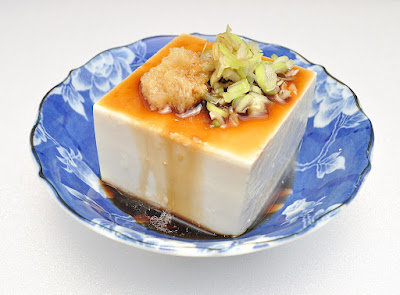The
Zhuangzi has always been one of my favorite texts, thanks to the humor, the wild flights of fantasy, the imaginative stories and parables, the poetry of its language. And of course its philosophical stance, which is a combination of relativism and skepticism, bound together by an all-pervading holism. At the same time, it is one of the most influential works ever written in Chinese, both within the Chinese tradition (think of poets as Tao Yuanming, Su Dongpo, Yang Wanli etc, as well as Zen Buddhism) and Japan (Basho!).
[Zhuangzi's Butterfly Dream by Ike no Taiga]
The core of the Zhuangzi may be of slightly earlier date than the Daodejing (around 270 BCE). These are the so-called
Seven Inner Chapters usually ascribed to the historical Zhuangzi (about whom virtually nothing is known except that he lived in the last three quarters of the 4th century BCE). Besides that, the book contains writings by anonymous followers of Zhuangzi's school and others who were sympathetic to it (the
Outer Chapters 8-22 and
Miscellaneous Chapters 23-33).
The
Zhuangzi shares the philosophy of the spontaneous changes of the universe, with which the sage should try to be in accordance, with the
Daodejing. Zhuangzi considered the moral patterns of the Confucians and other philosophers as artificial constructs of humans. The universe operates according to spontaneous processes and therefore humans should act spontaneously as well (translator Burton Watson calls this
freedom). However, humans have the tendency to make artificial distinctions, thus removing themselves from the spontaneous processes of the natural world.
The playful style and fictive anecdotes in the
Zhuangzi have the purpose to help readers break out of their habitual and artificial distinctions. That is why we have Confucius renouncing ritual, or he Sage Kings giving up their positions.
The philosophers of ancient China faced the same problem: how to live in a world of chaos and suffering. While the Confucians and others came with concrete action plans, the mystic
Zhuangzi said: free yourself from the world.
When a man named Nanrong Zhu came to visit Laozi, to ask for instruction, the Sage promptly asked: "Why did you come with all these people?" The man whirled around but there was nobody behind him. Of course Zhuangzi means here the baggage of old ideas, of conventional concepts of right and wrong that we all carry about. We must first discard these before we can be free. We human beings are the authors of our own suffering and bondage. Zhuangzi sums this up in the image of the leper woman, who "when she gives birth to a child in the deep of the night, rushes to fetch a torch and examine it, trembling with terror lest it look like herself" (Burton Watson, p. 4).
Zhuangzi tries to shock us out of our bondage by paradoxical anecdotes, nonsensical remarks and pseudo-logical discussions. Another deadly weapon he uses is humor - the very core of his style.
Zhuangzi is the philosopher of naturalness, of spontaneity. By just following nature, everything will be best. Applied to politics, this means the world will be ordered automatically, a spontaneous order without need for (too much) government.
In the same way, death is not to be feared as it is only one of the many natural transformations. Without believing in an afterlife, Zhuangzi just tells us to trust nature:
Zhuangzi's wife died. When Huizi went to convey his condolences, he found Zhuangzi sitting with his legs sprawled out, pounding on a tub and singing... [...] (When Huizi admonished him, Zhuangzi answered:) "You are wrong. When she first died, do you think I didn't grieve like anyone else? But I looked back to her beginning and the time before she was born. Not only the time before she was born, but the time before she had a body. Not only the time before she had a body, but the time before she had a spirit. In the midst of the jumble of wonder and mystery a change took place and she had a spirit. Another change and she had a body. Another change and she was born. Now there has been another change and she is dead. It is just like the progression of the four seasons, spring, summer, fall, winter. Now she is going to lie down peacefully in a vast room..." [modified from Watson, p. 191-92]
The most famous story of the Zhuangzi is the "butterfly story" (here modified from the
free Legge translation):
Once Zhuangzi dreamt that he was a butterfly, a butterfly flying about, enjoying itself. He did not know that he was Zhuangzi. Suddenly he awoke, and was himself again, the veritable Zhuangzi. But he did not know whether he was Zhuangzi who had dreamt that he was a butterfly, or a butterfly now dreaming that he was Zhuangzi. Between Zhuangzi and a butterfly there must be a some difference. This is called the Transformation of Things.
In China this epistemological story is so famous that it has become idiom ("Zhuang Zhou Meng Die").
The Zhuangzi is such a difficult text, also for Chinese, that you should do yourself the favor of selecting a translation by a specialist in Chinese. The best complete translation, in my view, is still the one by Sinologist and prolific translator Burton Watson, published by Columbia University Press in 1968, which is still available (just as in the case of the Daodejing, there are some terrible "translations" on the market, made by non-specialists who have put their fantasy to work on the basis of older translations - even Penguin Books has "sinned" in this case).
Burton watson, The Complete Works of Chuang Tzu (Columbia UP, 1968)
Burton Watson, Early Chinese Literature (Columbia UP, 1962)
The Columbia History of Chinese Literature (Columbia UP, 2001
A.C. Graham, Disputers of the Tao: Philosophical Argument in Ancient China (Open Court Publishing Company, 1989)
The online Stanford Encyclopedia of Philosophy has a good article on the Zhuangzi.
Non-Fiction Index













